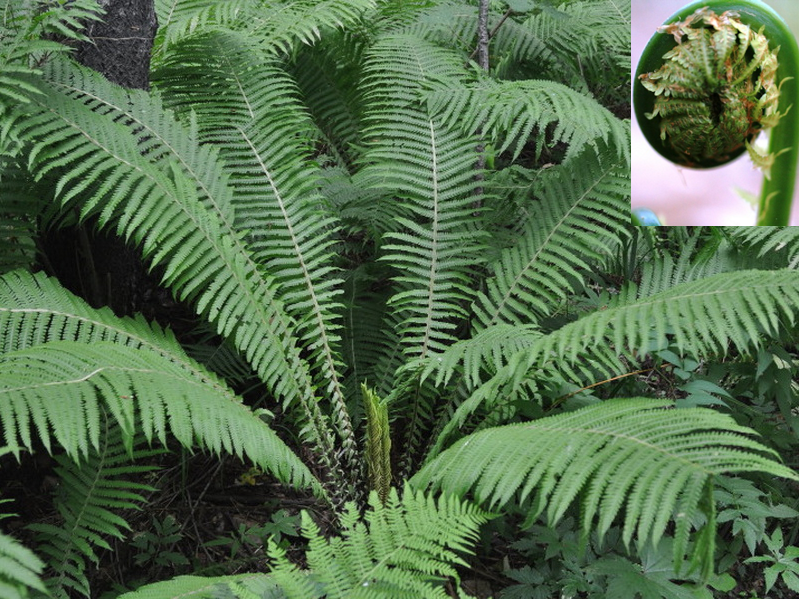Fiddlehead Fern
Matteuccia struthiopteris
Click here to download a PDF of this plant information page (for printing).

Sun Exposure: Part Sun, Shade
Season of Interest: Spring, Summer, Fall
Bloom Time: N/A
Bloom Color: Green
Height: 24 to 36 in.
Spread: 24 to 40 in.
Spacing: 36 in.
Water Needs: Above Average
Maintenance: Very little
Soil Type: Moist, High in organic matter
Soil pH: Acidic, Neutral
Soil Drainage: Well drained
Pests: None (Deer and Rabbit resistant)
Diseases: None
Wildlife: None

Description:
Fiddlehead ferns are deciduous ferns with bright bunches of green fronds that resemble ostrich feathers. The fern fronds appear at the base of the fern clump in spring as fiddleheads that will eventually unfurl. Fronds can reach four feet long. The upright, arching, rhizomatous plant spreads five to eight feet wide and grows two to three feet tall, and in the wild can grow up to six feet tall in moist, cool climates. Mass plantings do well naturalized in moist, shady woodland sites, wildflower gardens, rain gardens, and wet borders along streams and ponds. They can also be grown in containers.
Harvest fiddleheads for eating when they are still very young (when they grow to 4 to 8 inches above ground). As they mature, the ferns become bitter and fully mature fronds should not be eaten. Cut the fiddleheads at the base of the plant, near where the U-shaped stalk hits the ground. The stems of younger ferns can sometimes also be broken by hand. Harvest no more than two-thirds of the fiddleheads from a plant each spring. For more information see:
www.gardenia.net/plant/matteuccia-struthiopteris-ostrich-fern
Care and Growing Tips:
This fern grows in partial to full shade. Generally, dappled shade is best. Leaves can turn yellow and burn if exposed to full sun. Only if planted in an especially cool, moist location will it tolerate full sun. It grows best in soil that is moist, acidic, and rich in organic matter, but it will tolerate clay soil. Soil pH should be between 5.0 and 6.5. Native to marshes and creekbeds, they will tolerate some erosion and a lot of moisture. Water throughout the summer to maintain medium to wet conditions. Do not let soil dry out completely. Without enough moisture, the plant might go dormant too early in the growing season. While it is not necessary to fertilize an ostrich fern, if you are fertilizing other plants nearby, lightly fertilize the ferns. Do not overfertilize because these ferns are very sensitive to too much fertilizer.